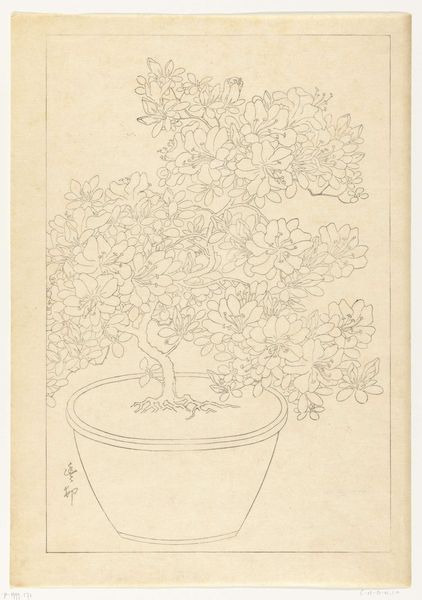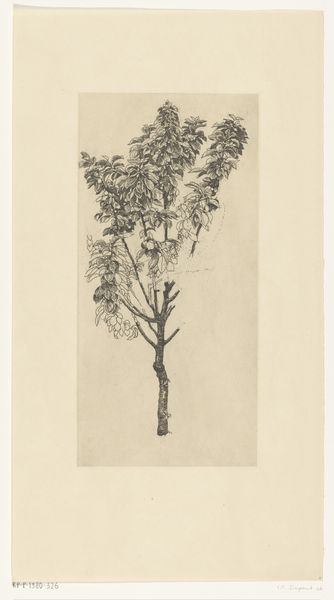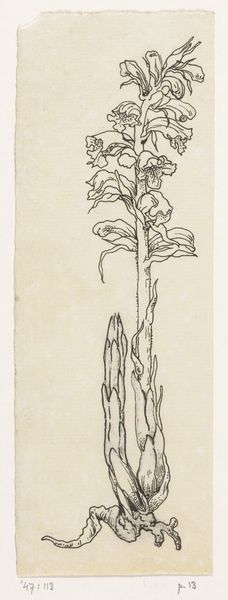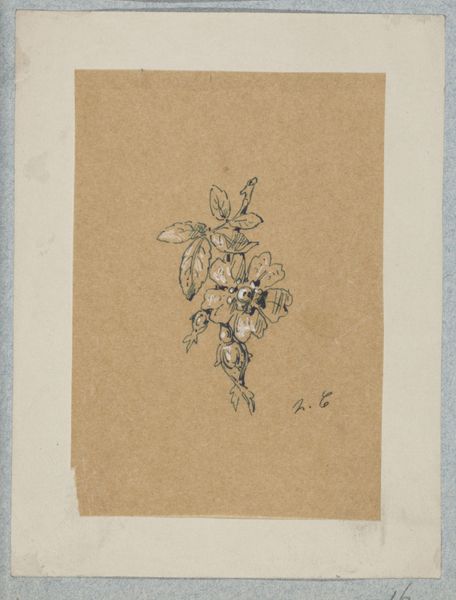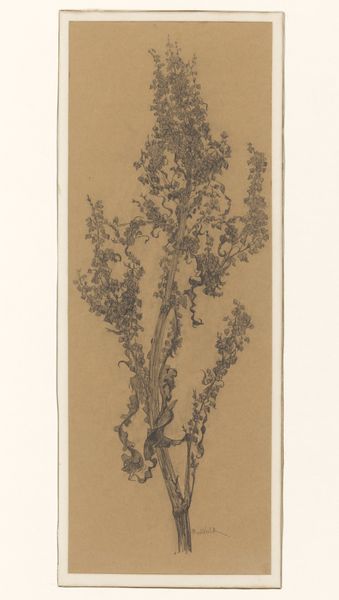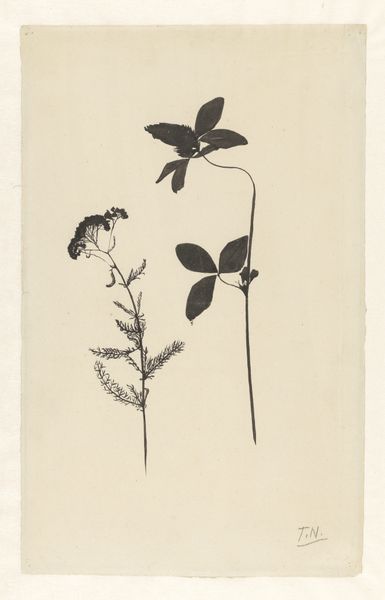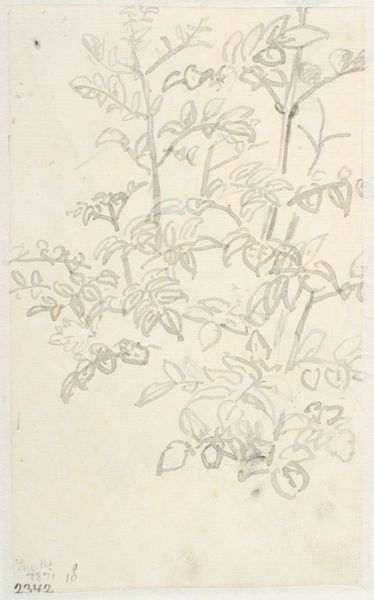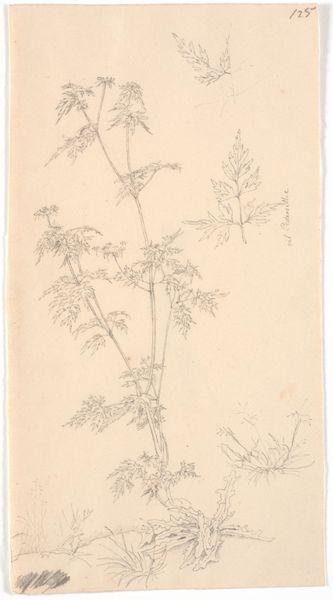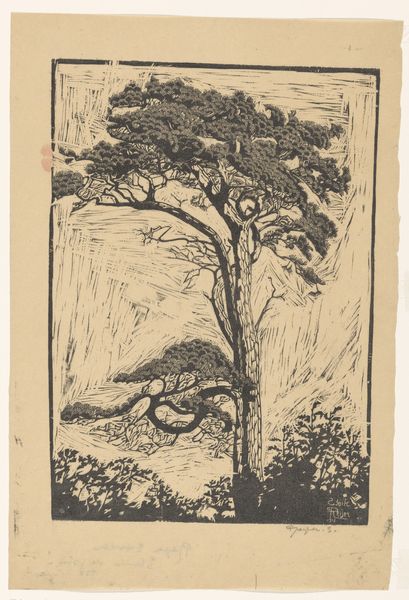
Omslagontwerp voor: Tentoonstelling van werken door S. Moulijn, 1897 before 1897
0:00
0:00
drawing, paper, ink
#
drawing
#
ink drawing
#
landscape
#
paper
#
ink
#
line
#
modernism
Dimensions: height 170 mm, width 125 mm
Copyright: Rijks Museum: Open Domain
Editor: This is the cover design for the exhibition catalog of work by Simon Moulijn, dating from before 1897. It's a simple ink drawing on paper featuring a tree and a pathway. There's something peaceful, almost meditative about it. What symbols or meanings do you see woven into this design? Curator: The image invites contemplation, doesn't it? The tree, central to the composition, serves as more than just a botanical subject; throughout history, trees often represent life, growth, and connection. Notice how its branches reach upwards—what emotional resonance does that evoke for you? Editor: I guess I see aspiration, reaching for something beyond, maybe knowledge. The path then suggests a journey. Curator: Precisely. And in a culture increasingly detached from nature, the idealized landscape can become a powerful symbol of longing, a kind of visual shorthand for a lost paradise. Consider also the formal nature of the Modernist style: are these serene symbols intentionally designed to soothe a disquieted soul? Editor: I hadn't thought about it that way. It's like the artist is offering a carefully curated version of nature, filtered and refined. Is that common for works of this period? Curator: It reflects the anxieties and aspirations of its time, yes. What might appear to be merely a landscape actually encapsulates a whole worldview, a cultural memory of simpler times and places, but also a forward looking visual language. Editor: So the image is both backward and forward looking at the same time. That’s really interesting, it gives me a lot to consider. Curator: And considering context always helps appreciate what an image can communicate across time!
Comments
No comments
Be the first to comment and join the conversation on the ultimate creative platform.
